Om Isfahan
Isfahan, Esfahan, Ispahan, Espahan The town of Isfahan is found on a fertile plateau at 1,500 metres altitude, surrounded by the Sagres mountains. Isfana in one of the world’s most beautiful cities, and it is a true gem when it comes to Persian art and architecture. Since old times, it...Read more
Showing 1–30 of 102 results
-

Isfahan Tæppe
CW2339022265cm x 49cmProduct from remote storageOnline
Priskr. 60.000kr. 45.000,- (-25%) -
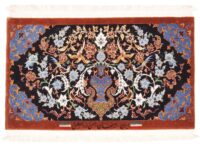
ISFAHAN Tæppe
MM7712871654cm x 91cmProduct from remote storageOnline
Priskr. 19.248kr. 14.436,- (-25%) -

Isfahan Tæppe
CW9386015699cm x 67cmProduct from remote storageOnline
Priskr. 9.600kr. 7.200,- (-25%) -

Isfahan Tæppe
CW59959879106cm x 65cmProduct from remote storageSoldkr. 16.800kr. 12.600,- (-25%) -

Isfahan Tæppe
CW84990178115cm x 60cmProduct from remote storageOnline
Priskr. 13.200kr. 9.900,- (-25%) -

Isfahan Tæppe
CW64060154100cm x 70cmProduct from remote storageOnline
Priskr. 14.400kr. 10.800,- (-25%) -

Isfahan Tæppe
CW72259962106cm x 76cmProduct from remote storageOnline
Priskr. 19.200kr. 14.400,- (-25%) -

Isfahan Tæppe
CW61160152113cm x 73cmProduct from remote storageSoldkr. 11.760kr. 8.820,- (-25%) -
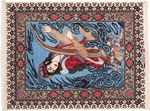
Isfahan Tæppe
CW66660157106cm x 82cmProduct from remote storageOnline
Priskr. 16.800kr. 12.600,- (-25%) -
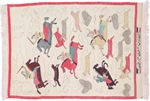
Isfahan Tæppe
CW71390221110cm x 80cmProduct from remote storageOnline
Priskr. 60.000kr. 45.000,- (-25%) -
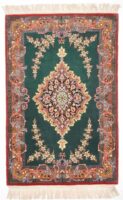
ISFAHAN Tæppe
MM90137008119cm x 78cmProduct from remote storageOnline
Priskr. 19.152kr. 14.364,- (-25%) -

Isfahan Tæppe
CW352511850113cm x 83cmProduct from remote storageOnline
Priskr. 21.600kr. 16.200,- (-25%) -

Isfahan Tæppe
CW66459976133cm x 98cmProduct from remote storageOnline
Priskr. 18.720kr. 14.040,- (-25%) -

Isfahan Tæppe
tt0136149cm x 104cmTilbudSale! kr. 6.400,- (-50%) -

Isfahan Tæppe
CW55060141160cm x 97cmProduct from remote storageOnline
Priskr. 36.000kr. 27.000,- (-25%) -

ISFAHAN Tæppe
MM46246637152cm x 107cmProduct from remote storageOnline
Priskr. 18.000kr. 13.500,- (-25%) -

Isfahan Tæppe
CW19260004204cm x 80cmProduct from remote storageOnline
Priskr. 60.000kr. 45.000,- (-25%) -

Isfahan Tæppe
tt283163cm x 104cmkr. 19.900,- -
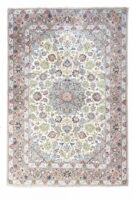
ISFAHAN Tæppe
MM94247144157cm x 108cmProduct from remote storageOnline
Priskr. 19.152kr. 14.364,- (-25%) -

Isfahan Tæppe
CW45690217160cm x 110cmProduct from remote storageOnline
Priskr. 288.000kr. 216.000,- (-25%) -

Isfahan Tæppe
CW91690218160cm x 110cmProduct from remote storageOnline
Priskr. 192.000kr. 144.000,- (-25%) -

Isfahan Tæppe
CW57060003160cm x 110cmProduct from remote storageOnline
Priskr. 60.000kr. 45.000,- (-25%) -
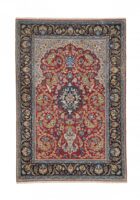
ISFAHAN Tæppe
MM78043724161cm x 110cmProduct from remote storageOnline
Priskr. 28.800kr. 21.600,- (-25%) -
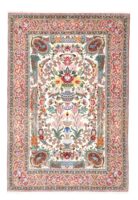
ISFAHAN Tæppe
MM10341396161cm x 110cmProduct from remote storageOnline
Priskr. 31.224kr. 23.418,- (-25%) -
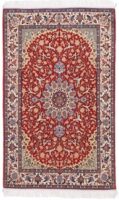
Isfahan Tæppe
CW46559270169cm x 105cmProduct from remote storageOnline
Priskr. 43.200kr. 32.400,- (-25%) -
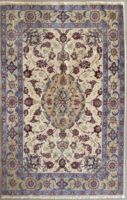
Isfahan Tæppe
tt0148166cm x 107cmTilbudSale! kr. 14.925,- (-25%) -

Isfahan Tæppe
CW45190220167cm x 109cmProduct from remote storageOnline
Priskr. 72.000kr. 54.000,- (-25%) -
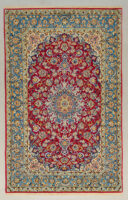
Isfahan Tæppe
bbm15169cm x 108cmTilbudSale! kr. 18.750,- (-25%) -

Isfahan Tæppe
CW90160020215cm x 85cmProduct from remote storageOnline
Priskr. 60.000kr. 45.000,- (-25%) -

Isfahan Tæppe
CW13360002168cm x 110cmProduct from remote storageOnline
Priskr. 60.000kr. 45.000,- (-25%)
Showing 1–30 of 102 results
Mere om Isfahan
Isfahan, Esfahan, Ispahan, Espahan
The town of Isfahan is found on a fertile plateau at 1,500 metres altitude, surrounded by the Sagres mountains. Isfana in one of the world’s most beautiful cities, and it is a true gem when it comes to Persian art and architecture. Since old times, it has been an important centre along the caravan route. However, only when shah Abbas the Great made this the capital city in 1598 did the golden age truly begin. Isfahan is today one of Iran’s most important travel destinations. The atmosphere here is taken straight out of 1001 Nights. The lavishly decorated mosques and palaces are impressive in their own right. The luscious parks with fountains and pavilions are magnificent. The old bridges that lead over the Zayandeh-Rud river are fascinating, and the old bazaar is a true labyrinth of tight alleys covered by tall stone arches. Here you can find lots of busy workshops and stores with an abundance of all sorts of traditional Persian handicraft. Being such a great art lover, shah Abbas the Great (1587-1629) founded his own famous carpet workshops in Isfahan. For centuries, Isfahan carpets have been admired, and it was probably these Persian carpets that the Europeans first learned to appreciate. Many of these carpets were gifted to kings, emperors and princes, and this made the art of carpet making known and desired worldwide. Shah Abbas named several of the patterns, all of which were inspired by the lily (also called lotus). The shah Abbas pattern is found in more or less complicated varieties and is being currently knotted all over Iran. Often you can see them in carpets like Keshan, Nain, Qum, Tabriz, Mashad and Isfahan. Modern-day carpets from Isfahan are still of high quality, and they have the classic patterns with a medallion with flower vines and beautiful corner motifs, garden and vase motifs and a ‘mehrab’ prayer alcove with the ‘Tree of Life’, birds and animals. Today, many carpets from Isfahan are being knotted on a silk warp with Senneh knots and a knot density ranging from 56,000 to some 93,000 knots per ft2. Today, you can also find Isfahan carpets on the market that are finely knotted on a silk warp, but which are made with lesser quality dyes and wool.
When writing about Isfahan carpets, you have to mention the Seirafian family, which has been famous for their knotting artistry for generations. Today, there are several workshops in Isfahan that produce very fine carpets, including Davari, Enteshari and Mahdie and Dardashti.
Source:
You are reading an extract from the book ‘Oriental Carpets, Knottet with Love’ by Martin Munkholm.
This extensive book about all that is carpets can be borrowed in Danish libraries or be bought following this link: https://belle-rugs.dk/se-taepper/bog-aegte-taepper-knyttet-med-kaerlighed/
The book is published by Muusmann Forlag.
For more info: http://muusmann-forlag.dk/
See video about Isfahan rugs here: https://www.youtube.com/embed/1CUuNCseH6w
You can find our selection of Isfahan rugs underneath.
